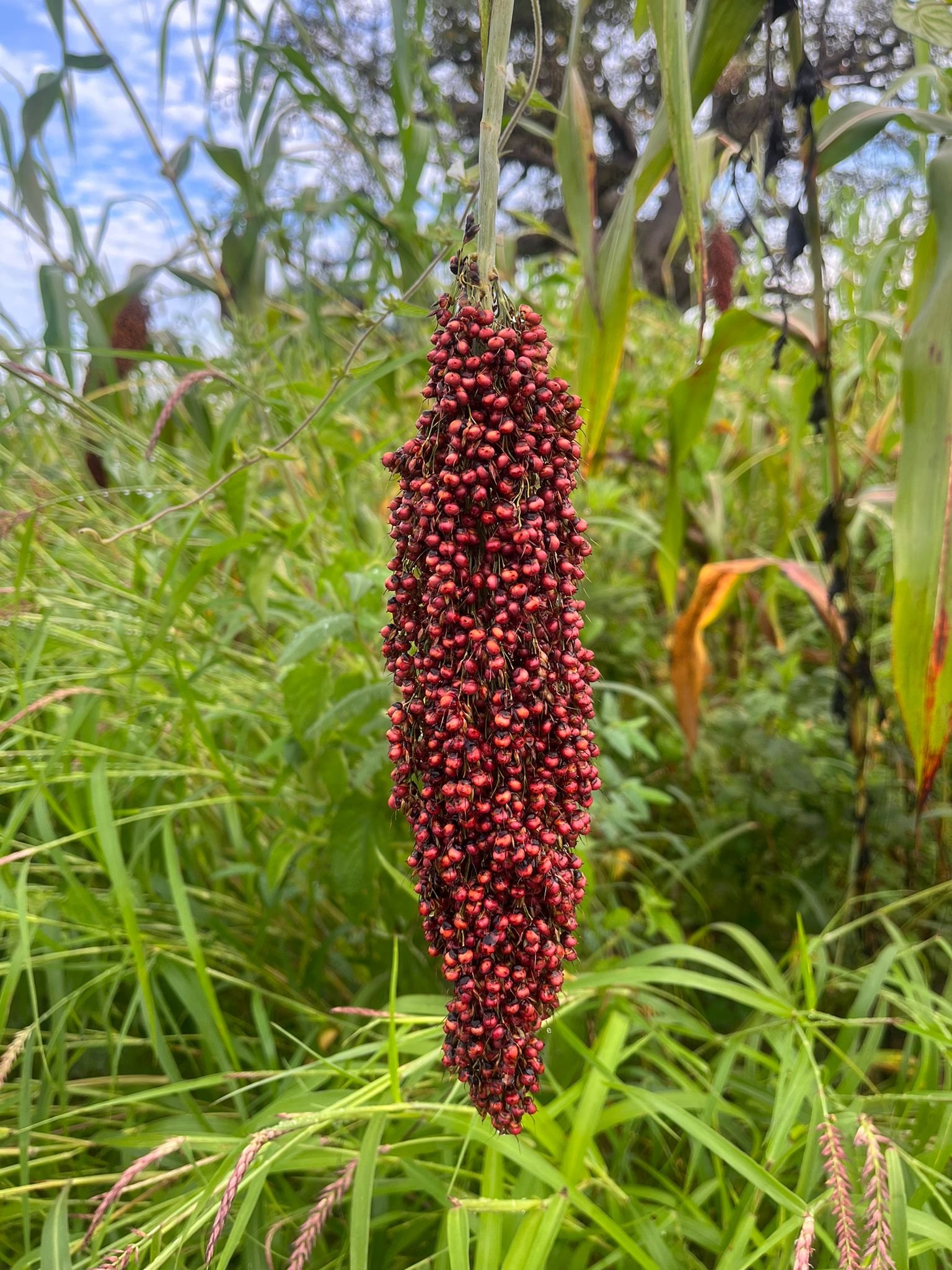Community Seed Bank: To Protect, To Preserve, and To Save Indigenous Seeds
Indigenous seeds are not manmade machines that thrive on diesel or coal to produce. Indigenous seeds are not made in laboratories that feed on agrochemicals to create and sustain life. Indigenous seeds are not a recent discovery subject to corporate greed and restrictive laws on their purpose, usage, and access.
Indigenous, traditional, and landrace seeds are often used interchangeably to refer to seeds native to a land, a community, or a group of people. Indigenous seeds belong to a particular geographic region and are inherent to the people's agricultural practices and way of life. Indigenous seeds are a result of hundreds of years of farmers' and communities' investment in selecting seeds concerning their environment, nutritional preferences, cultural needs, climate changes, traditional practices, economic factors, etc. Farmers and their communities have invested years of generational and communal work in maintaining seed systems that support biodiversity, perpetuate agroecology, and nurture natural ecosystems. Every single indigenous, traditional, and landrace seed in our hands today come from the land and toil of a peasant or smallholder farmer.
Sorghum
In the Upper East region of Ghana, the early millet in Gurune is called Naara, and our late millet called Ze, are our traditional seeds deeply connected to our way of life. The Naara is one of the first crops to be ready, and we enjoy it freshly roasted with shea butter. In addition, once the millet dries on the cob, we can munch on the dried millet grains as food. The early millet fills the stomach while we wait for the other crops to be ready for harvest. All our cultural foods from the beginning of our origin story as Gurune people is connected to both the early and late millet. If you trace the birth of our millets, you will see our identity in the planting, harvesting, saving, and using of their seeds. If you see the seed, then you have seen the people.
Our indigenous seeds are at risk of corporate-led seed supply. Corporations use biotechnology through genetically modified organism seeds to pollute and contaminate indigenous seeds. Genetically modified organism seeds are created in laboratories for specific desirable traits by inserting foreign genes into seeds. These genes are often taken from other plants or other organisms, which can be from an animal, bacteria, or fungi with the end goal of producing sterile seeds. This means farmers and their communities cannot save nor preserve the next generation of seeds. Hence, farmers are subject to purchase GMO seeds year after year removing them from the ancestral practice and wisdom of seed saving.
Corporations use intellectual property rights (IPRs) over seeds to claim ownership of the knowledge over the seeds produced. In many communities, claiming intellectual ownership and control over seeds is a foreign concept to many communities as seeds belong to nature, to all people, and to all living things. The original seeds used to create GMO seeds, improved seeds, and high-yielding seeds come from using indigenous and landrace seeds. There are no seeds that emerged from thin air. Thus, claiming intellectual ownership over the use of seed naturally provided by the land and carefully selected year after year by communities is unethical as it posses a restriction over how people can access and use the seeds.
Local yellow maize variety (Nuagenger)
Community seed banking is one of the ways to save, protect, and preserve indigenous seeds amongst farmers and within a community. A community seed bank is a communally owned space for storing varieties of farmers' seeds that the community deems important to them. The process is led by farmers interested in saving their local or organizations interested in supporting farmers to save indigenous seeds. The general concept of a community seed bank captures seed conservation, production, saving, uses, exchanges, etc.
A community seed bank brings together the community to discuss the state of their seed security, and usually during this process, farmers will discuss what seeds and varieties they have, which seeds they have lost, and what seeds they wish to get back in context to climate change or their nutritional needs. This process of bringing the community together demonstrates collective action, which often enables a community to understand the state of their indigenous seeds. This communal practice of coming together goes against the corporate seed supply which seeks to privatize and monopolize farmers' seeds through biotechnology.
Late Millet (Ze)
A community seed banking process also enables farmers and community members to discuss the associated traditional knowledge and cultural practices tied to different seeds. For instance, the late millet in the Upper East region of Ghana is important for cultural practices. Hence, if the late millet is not available, some cultural practices cannot take place. During the seed banking process, the sharing of the stories and practices associated with different seeds are passed on from one farmer to another, or to the group at large. Community seed bank creates the space for the free exchange and sharing of knowledge.
As farmers bring their indigenous seeds to be saved at the seed bank, other farmers within the community also get access to these seeds, which means that a certain variety of seeds is available to more than one farmer. This encourages farmers to share their seeds so that multiple farmers can grow and multiply different varieties of seeds, strengthening the diversity of farmers' seeds. As other farmers borrow or take seeds from the seed bank to grow and to also return from their harvest, the seeds become tailored for local growing conditions, and this is an effective way of supplying farmers seeds back to farmers to meet the local growing conditions. It is also a space for promoting sustainable farming practices and relies on farmers' ever-expanding production. The community seed bank keeps indigenous seeds in the hands of the farmers, their communities, and on the ancestral land.


